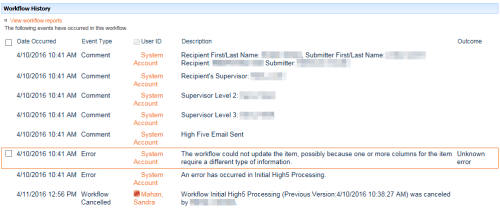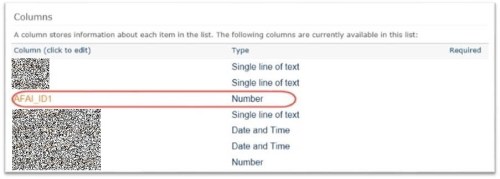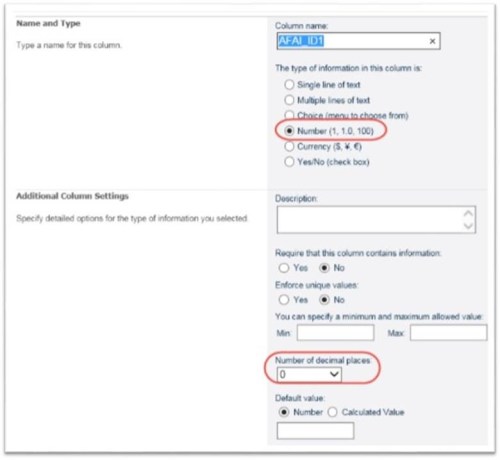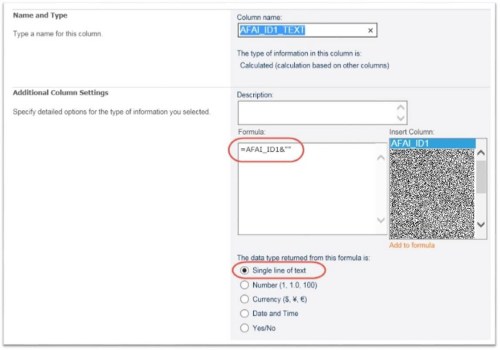This is one of those posts that I have to write, as it’s how I deal with things I’m feeling. In this particular case, it’s how I feel about being labeled a SharePoint “developer”. It sort of bubbled up inside me as I was reading various reactions to yesterday’s announcements during the Future Of SharePoint event.
When I hear someone use the word “programmer” or “developer”, I think (as do probably most people) of someone slinging code and spending all day in a IDE like Visual Studio. These are the people who integrate one thing with another using all sorts of code frameworks and protocols. And to be certain, they are worth their weight in gold (provided you can actually talk with them as a normal human being).
But there’s another world of “development” that is where I live. It’s the skillset of taking existing parts of the system (I like using the term “out of the box”) and wiring them together to create solutions for a customer and organization. Yes, a power user could do this, but the vast majority of people who use SharePoint don’t want (or don’t have the skills or mindset) to do that. They want to have someone who understands the software and their issues wire all that up for them. They want a quick solution that’s easy to use, and they don’t give a rat’s a** what is happening behind the scenes. They just want results.
And that’s what I deliver… quick solutions that meet a business need and add value to the organization.
So what’s wrong with that? Well, I’ve technically been a programmer my entire 35+ years in IT. I’ve done time in the COBOL world. I’ve created RPG III programs. I coded rather cool LotusScript agents in Notes. But realistically, I’ve always been the type of developer you could put in front of the business, and that was focused on a solution that could be implemented quickly. But compared to the people I naturally compare myself to (the hardcore developers), I’m pretty much worthless. Or at least that’s what I beat myself up with…
In yesterday’s Future Of SharePoint webcast, I saw a LOT of things that will make a huge difference to how my customers will be able to work. I saw a LOT of things that will be fun to play with, and to hook up to create new solutions. Based on the reactions from others, they saw the same things I did. But there was a number of people who pretty much didn’t care for anything that was announced. In their opinion, it was either not enough or was focused in the wrong area. They didn’t show real code. They were “consumerizing” SharePoint and destroying the abilities of ISVs to add value.
It seemed like most of those people were what I’d consider “real developers.” And so I wonder… am I just not good enough to understand why I shouldn’t be excited? Am I wrong for not being up in arms about the direction of things? Am I following a path that is a dead-end?
Once I pull myself out of that mental spiral, here’s what I come up with…
I’m not an IT Pro, in that I’m not the person who knows all the networking/configuration/etc that comes as being an admin. I’m probably not a “programmer”, in that I don’t sling real code much. I *am* a developer, in that I develop solutions for my organization that make a major difference and add value. I also serve as a SharePoint Help Desk, a technical consultant to the business, a training and adoption driver, and I wear whatever hat is necessary to keep SharePoint (and soon to be Office 365) running and my customers happy.
None of this is an excuse to not learn new skills. That’s a whole different list of things that I beat myself up over on a regular basis. I am a charter member of Imposter Syndrome Anonymous, and I don’t think that will ever go away until I retire or die. I often wonder if I’d be able to find a new job if I had to leave this one for some reason.
But having said all that… I deliver value. I build things. I’m open to being labeled whatever reflects that, whether developer, programmer, engineer, or internal consultant. I’m pragmatic, in that I’m sure there are a number of “flaws” in SharePoint and Office 365 that should be addressed. But I’m excited about where things are at, I’m excited about the direction that Microsoft is going, and I’m excited that I get to play in that sandbox.
And with that, I’ll head back to my happy world of making others happy. It’s how I roll…





 So today’s adventure involved fixing someone’s custom list form that had “broken”. They said that it used to look one way, and then something happened and now it looks different and things at the top of the form are gone. Not a lot to go on, but that’s my job… figure things out based on people explaining issues in terms they understand.
So today’s adventure involved fixing someone’s custom list form that had “broken”. They said that it used to look one way, and then something happened and now it looks different and things at the top of the form are gone. Not a lot to go on, but that’s my job… figure things out based on people explaining issues in terms they understand.




